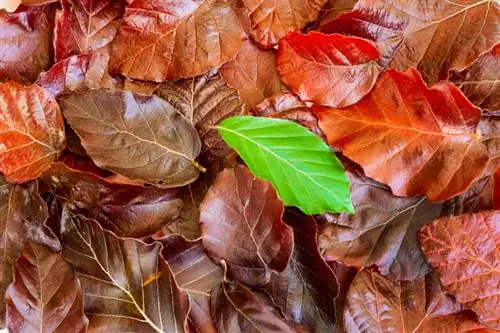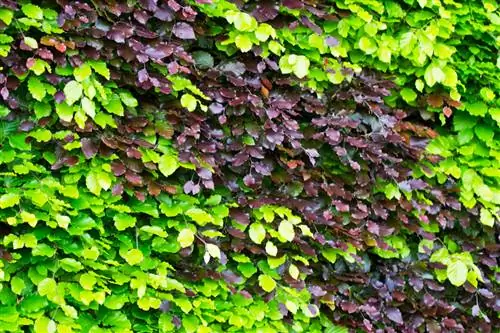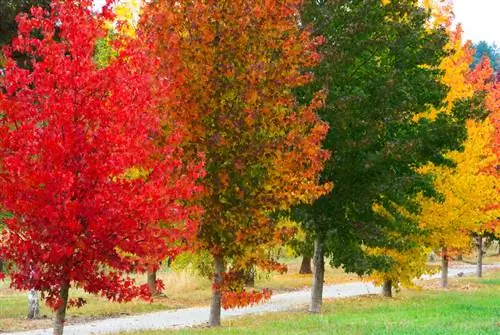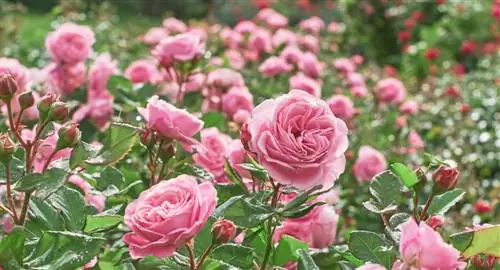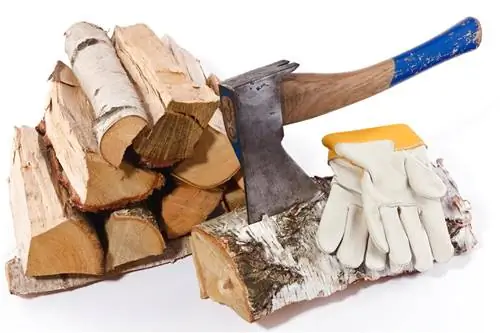- Author admin [email protected].
- Public 2023-12-16 16:46.
- Last modified 2025-01-23 11:20.
Common beeches (Fagus sylvatica) and copper beeches (Fagus sylvatica f. purpurea) both belong to the beech family. They do not differ in shape or care. The only difference is the color of the leaves. This is a freak of nature.
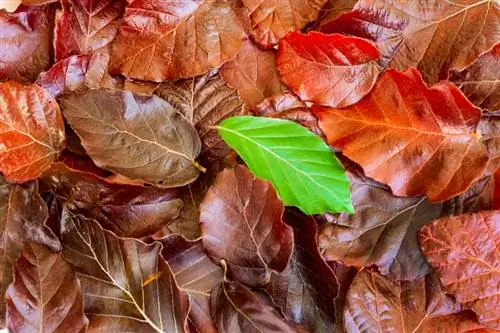
What is the difference between copper beech and copper beech?
Common beeches (Fagus sylvatica) have green leaves, while copper beeches (Fagus sylvatica f. purpurea) have red or reddish-brown leaves. Both tree species are identical in terms of care, size and growth, they only differ in the leaf color.
The common beech has green leaves
Many people think that common beech and copper beech, also known as purple beech, are just different names for the same tree. However, that is not correct.
Despite its name, the common beech has green leaves! It is only called that because of the slightly reddish wood. The shoots are also slightly red. Both also apply to copper beech.
In contrast to the common beech, the copper beech actually has red leaves that can change from bright red to reddish brown. There are also copper beeches that have green-red leaves.
Why does copper beech have red leaves?
The leaves of the copper beech contain a very high proportion of cyanidin, a red pigment. It is significantly higher than the proportion of chlorophyll, which turns the leaves green in the common beech.
Gardening experts assume that the color difference is caused by a mutation.
The autumn leaves are the same for both beech species
Both copper beeches and copper beeches have bright autumn leaves. It turns orange-red in autumn and shines particularly intensely in mid-November.
Both types of beech are summer green. However, many species carry their dried leaves on the tree well into the winter, often even until new growth appears. That's why many gardeners mistakenly believe that the trees are evergreen.
Because of their rapid growth and dense foliage even in winter, European beeches and copper beeches are often used as hedge plants.
Beech species do not differ in terms of care
They have the same requirements in terms of location and care and can be grown next to each other without any problems. They also did not differ in terms of:
- Size
- Age
- Growth
- Fruits
- Flowering time
The only difference is actually the different colored leaves.
Tip
The hornbeam (Carpinus betulus), which is often mistakenly classified as a beech, is a birch tree. It is also called hornbeam because of its very light wood.

